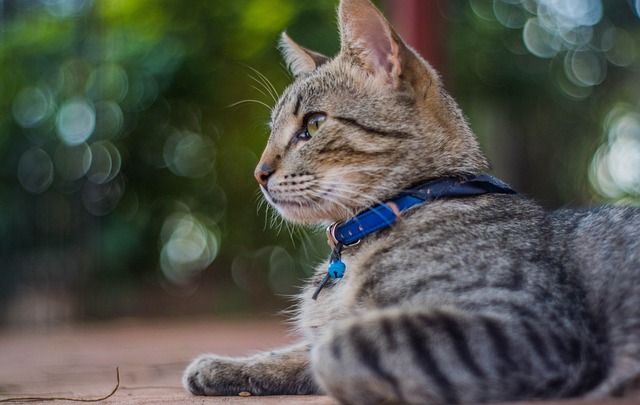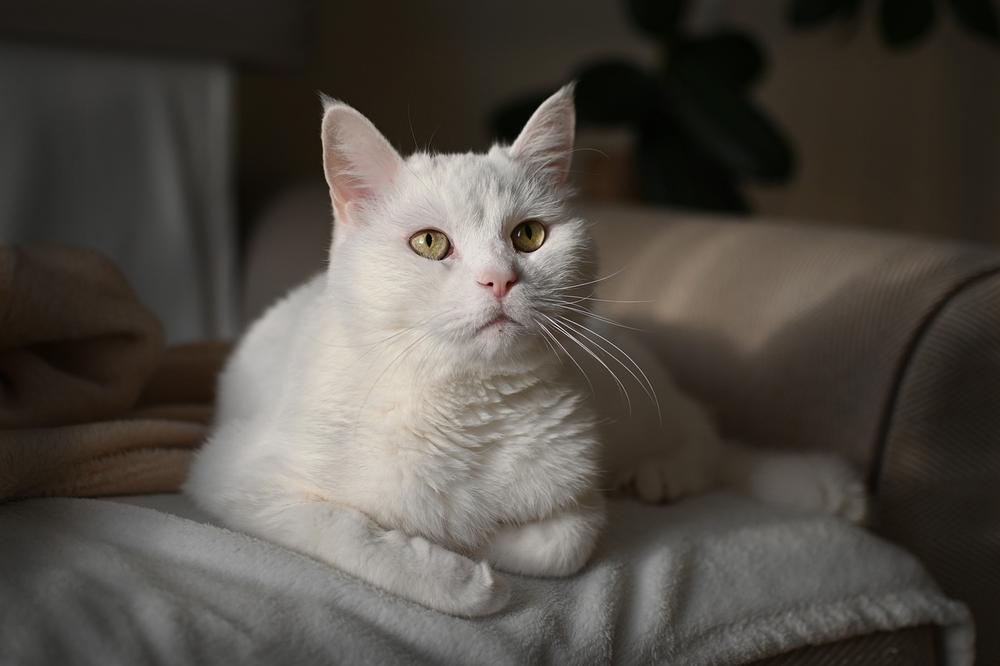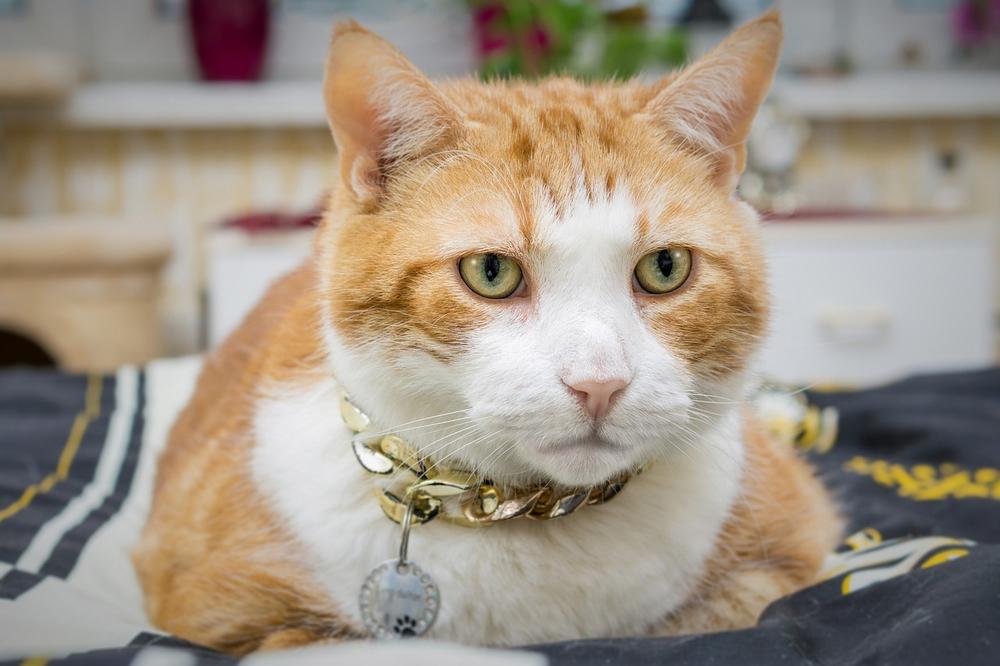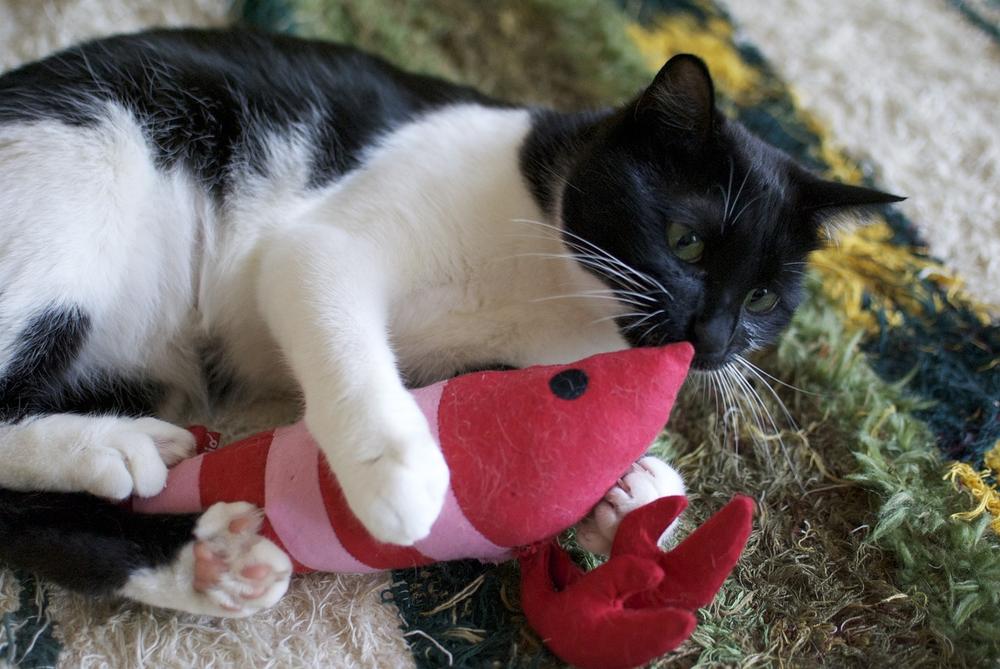Should Your Cat Wear a Collar?

Visualize this:
You love your furball to bits, but you're torn between safety and comfort.
What if your cuddly companion hates that collar?
Will it suffocate them? 😮
Can we find common ground?
Keep reading.
Deciding When and Why Your Cat Should Wear a Collar
Deciding when and why your cat should wear a collar isn't easy.
You gotta think about a few things first:
- How does your furry friend act? Some cats get stressed or uncomfortable with collars, while others adapt quickly.
- Does your cat go outside? If you let them out under supervision or have a safe outdoor area, a collar is crucial to keep them safe, especially near busy streets.
- Does your cat have special needs or anxiety? A collar can provide identification for these cats in case they wander off.
- What are the odds of your cat returning home if lost? Collars increase their chances, whether they're indoor or outdoor kitties.
- ID tags are a must-have. All cats need collars with tags for a better chance of finding their way back, even if they never step paw outside.
- Is your cat following the law? They need a collar with an ID tag and a current Rabies tag to meet state requirements and improve their chances of making it home.
- Think about nature too. Collars with IDs help reduce the negative impact house cats have on the environment by getting them home fast if they get lost.
- Feeling extra cautious? Combine the collar with a microchip for added security in reuniting a lost cat with its owner.
So, make the choice that keeps your cat safe and increases the likelihood of bringing them back home if they wander off or get hurt. 😺
Main points I'll expand upon further down this article:
- Cats Protection and PDSA advise against cats wearing collars due to potential risks.
- Collars can hinder cats' natural adventurous nature and potentially cause accidents.
- Attaching bells or ID tags to collars is not recommended.
- Quick release or snap opening collars are safer options.
- Breakaway mechanisms are recommended for preventing accidents.
- Orange collars can indicate indoor cats.
- Use both a collar and microchip for expedited identification.
And now, let's dive into the different types of safety collars available and what organizations like Cats Protection and PDSA have to say about cats wearing collars.
You have to be aware of the potential risks involved so that you can make an informed decision for your furry friend's well-being...
Safety Concerns With Cat Collars
When it comes to cat collars, safety is a top concern. Here are some key points to consider:
- Research collar options: Look into breakaway collars or stretchy elastic collars that easily come off if caught on something.
- However, organizations like Cats Protection and PDSA advise against cats wearing collars due to potential injury risks and accidents.
- Entanglement dangers: Collars can become entangled while cats play, hunt, or try to escape danger, hindering their natural adventurous nature and potentially causing them to get stuck or fight with other cats.
- Avoid attaching bells or ID tags: These pose risks of injury and entanglement.
- Quick-release or snap opening collars: Opt for this type to prevent trapping and harm.
- Breakaway mechanisms: Collars with these are the safest option, even for indoor cats who may escape in emergencies.
- Proper fitting: A properly fitted collar can increase safety but doesn't guarantee a lost cat will be reunited with its owner.
- Consider orange collars for indoor cats: This signals they should stay indoors (Kitty Convict Project).
- Microchipping is vital: Use both a collar and microchip for fast identification and reunification.
- Microchips provide permanent identification and legal proof of ownership while ensuring contact information is updated.
Keep your feline friend safe and secure with these collar safety measures!
And when it comes to keeping your cat safe at night, there are some important considerations to take into account.
While I've shared tips on collar safety, I also want to address concerns about locking your cat in a bathroom during those dark hours.
When you're unsure whether this practice is humane or safe for your feline friend, I encourage you to explore my blog post titled Should You Lock Your Cat in a Bathroom at Night.
Fair warning, it's always better to gather information so you can make the best decision for both you and your kitty.
Ensuring the Safety of Your Cat's Collar
Here's how to keep your cat's collar safe:
- Make sure it fits right so your furball doesn't choke or get uncomfortable.
- Keep some room for those precious fingers of yours, just one or two will do the trick.
- Keep an eye on that collar, check for any signs of damage or wear, you don't want any surprises.
- Find a collar that you can easily adjust, simple as that.
- Skip the tight collars, they bring pain and nobody wants that.
- Avoid all that jingly noise from tags by getting nameplates or embroidered collars, way less distracting for your whiskered pal.
- Get rid of that annoyance caused by tags clanging together with tag silencers or rubber bands, peace is important.
- When darkness rolls around, make sure your furry companion stays visible by choosing reflective collars, safety first!
- Take it up a notch by going for collars with a reflective strip . This will really catch the attention of drivers, keeping your little buddy safe.
- Don't forget about identification, microchip your cat, plain and simple.
- Keep tabs on those contact details in the microchip database, update them whenever anything changes, you don't want anyone finding Fluffy without knowing where to return her.
Stick with these steps and rest easy knowing your cat's collar is comfy, safe, and if needed, provides proper identification.

And now, let's dive into the exciting process of choosing the perfect collar for your furball... With a wide range of adjustable options available, you'll have no trouble finding the right fit that ensures both comfort and style.
So why wait?
Let's explore the world of cat collars together!
Choosing the Right Collar for Your Cat
Go for adjustable cat collars so you can adapt them as your furry friend grows.
The market is flooded with styles and colors, offering endless choices for you to explore.

Finding the purr-fect collar is an adventure in itself, guaranteeing nothing but a snug fit for your precious whiskered companion.
Comfort and security are must-haves, ensuring your feline's total ease without any bothersome tightness.
Embrace this journey with joy, knowing that you hold the power to grant your kitty the ultimate comfort and style with just a simple collar choice.
Tips for Getting Your Cat to Wear a Collar
So, here's what you gotta do to get your cat comfy with a collar:
- Take it slow when introducing the collar.
- Let your cat check it out and sniff it first.
- Start by putting it on for short periods at a time.
- Use treats or catnip toys to occupy their attention.
- Give 'em things like climbing posts or other fun stuff to keep 'em entertained.
- Gradually increase how long they wear the collar.
- Positive reinforcement is key here, so reward 'em for good behavior.
- Make sure to create a happy association between your cat and the collar.
Now listen up:
At first, your kitty might try to scratch that collar, but don't sweat it!
With some patience and time, they'll get used to it.
Just make sure that you start off without any tags or bells on there.
Once they're more comfortable, you can add those in little by little.
And hey, offering treats and distractions is super important.
That way, you can distract your cat and make wearing the collar a positive experience.

Oh, and don't forget about positive reinforcement!
Give 'em praise or treats when they wear that collar like a champ.
Before you know it, wearing a collar will be second nature to your furry friend.
But here's the thing you might not know...
There are alternative options to collars that can provide reliable identification for your cat.
In fact, some of these options are even more effective and convenient than traditional collars.
Intrigued?
Let me fill you in on some great alternatives in the next section...
Alternatives to Cat Collars
When it comes to cat collars, there are a few options you can consider. Here's what you need to know:
- Microchipping: It's a reliable and great alternative for identification. You won't have to worry about losing or removing it since it's permanent. Plus, it's hassle-free.
- Spot-on treatments: Those old flea collars don't work well and can harm your cat's skin. Instead, go for spot-on treatments that veterinarians recommend. They're effective in preventing fleas.
- Wildlife protection: If you want to keep wildlife safe, feeders should be kept away from trees. Raising them on poles that cats cannot climb is a smart move. This way, everyone stays out of harm's way.
- Leash walking: Want to take your cat for a walk? Forget the collar and opt for a properly fitted halter. It provides better control and ensures your cat's safety.
- Permanent identification options: If your pet is spayed or has specific markings, microchipping or tattoos are reliable choices. They'll help identify your furry friend if they ever wander off.
By taking these options into account, you can guarantee the security and welfare of your feline companion without relying on conventional collars.
And that wraps up today's article.
If you wish to read more of my useful articles, I recommend you check out some of these: Why Does My Cat Drag My Clothes Into the Litter Box, Kitten Crying for Mom, Can Cats Swim, Why Does My Cat Eat My Other Cats Whiskers, and Can I Keep My Cat in the Garage at Night
Talk soon,
-Sarah Davis